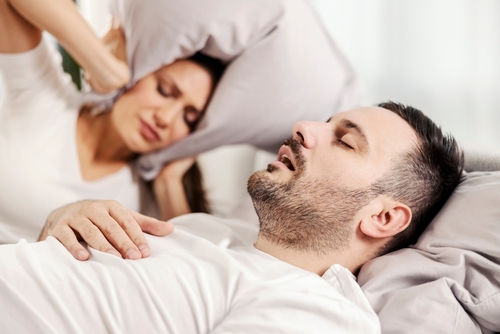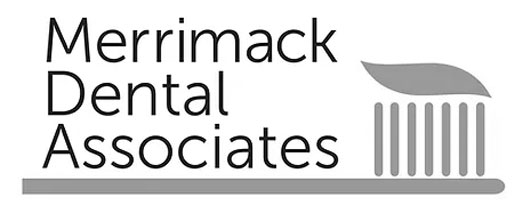Sleep apnea is a sleep disorder that affects millions of people around the world. It is characterized by pauses in breathing or shallow breaths during sleep, leading to interrupted sleep patterns and daytime fatigue. While sleep apnea may seem like a common occurrence, it is a serious condition that can have severe implications on a person’s health. In this blog, we will explore the signs of sleep apnea that you can’t ignore, the different types of sleep apnea, the symptoms to watch out for, when to seek medical attention, the causes and risk factors, the complications it can cause, and how it can impact your daily life.
Understanding Sleep Apnea
Sleep apnea is a sleep disorder that falls under the category of sleep-related breathing disorders. It is characterized by breathing pauses or shallow breaths during sleep, which can occur multiple times throughout the night. These breathing interruptions are usually accompanied by loud snoring, choking, or gasping sounds. Sleep apnea can significantly disrupt the sleep cycle, leading to excessive daytime sleepiness and fatigue. If left untreated, sleep apnea can have serious health implications, including an increased risk of high blood pressure, heart disease, stroke, and other cardiovascular problems.
Common Misconceptions About Sleep Apnea
There are several misconceptions surrounding sleep apnea that can prevent people from seeking the necessary medical attention. One common misconception is that loud snoring is harmless. While snoring is a common symptom of sleep apnea, it can also indicate other sleep disorders or breathing problems. Another misconception is that sleep apnea only affects older, overweight men. In reality, sleep apnea can affect individuals of any age and gender, including children. Additionally, there is often confusion about the types of sleep apnea, with many people unaware of central sleep apnea, which is caused by a failure of the brain to send the proper signals to the muscles responsible for breathing.
Types of Sleep Apnea
Sleep apnea can be classified into different types, based on the underlying cause of the breathing interruptions. The most common type of sleep apnea is obstructive sleep apnea (OSA), which occurs when the muscles in the back of the throat fail to keep the airway open, resulting in breathing pauses or shallow breaths. Central sleep apnea (CSA) is less common and happens when the brain fails to send the proper signals to the muscles that control breathing. Mixed sleep apnea, as the name suggests, is a combination of both obstructive and central sleep apnea, and it exhibits characteristics of both types.
Obstructive Sleep Apnea
Obstructive sleep apnea (OSA) is the most common type of sleep apnea, accounting for the majority of cases. This type of sleep apnea occurs when the muscles in the back of the throat fail to keep the airway open, resulting in breathing pauses or shallow breaths. The upper airway becomes partially or completely blocked during sleep, leading to snoring, choking, or gasping for air. Risk factors for obstructive sleep apnea include obesity, family history, and certain physical characteristics, such as a thick neck or narrow airway. The treatment options for obstructive sleep apnea vary depending on the severity of the condition, but lifestyle changes, such as weight loss, sleeping on the side, and avoiding alcohol and sedatives, can often alleviate symptoms. In more severe cases, the use of continuous positive airway pressure (CPAP) machines or surgery may be necessary to keep the airway open during sleep.
Central Sleep Apnea
Central sleep apnea (CSA) is a less common type of sleep apnea that occurs when the brain fails to send the proper signals to the muscles responsible for breathing. Unlike obstructive sleep apnea, where the airway is physically blocked, central sleep apnea is caused by a dysfunction in the central nervous system. This can result in the absence of respiratory effort during sleep, leading to breathing pauses or shallow breaths. People with central sleep apnea may not experience loud snoring, as the blockage is not in the throat but rather in the brain’s ability to initiate breathing. Treatment options for central sleep apnea often involve addressing the underlying medical conditions that may be causing breathing problems, such as heart failure, stroke, or certain medications. The emphasis is on managing the underlying conditions and optimizing the person’s health to improve breathing during sleep.
Mixed Sleep Apnea
Mixed sleep apnea is a combination of obstructive sleep apnea (OSA) and central sleep apnea (CSA). It exhibits characteristics of both types, with the airway being partially or completely blocked, and the brain failing to send the proper signals to the breathing muscles. Diagnosis of mixed sleep apnea can be challenging, as it requires comprehensive sleep studies to distinguish between the two types of sleep apnea. Effective treatment often necessitates a tailored approach, taking into account the symptoms of obstructive sleep apnea, as well as central sleep apnea. Comprehensive evaluation, including sleep studies, physical exams, and medical history assessment, is crucial in managing the complexities of mixed sleep apnea and tailoring treatment options accordingly.
Recognizing Symptoms of Sleep Apnea
Recognizing the symptoms of sleep apnea is crucial for early detection and treatment. The most common symptoms of sleep apnea include loud snoring, daytime sleepiness, morning headaches, and trouble concentrating. Individuals with sleep apnea may also experience fatigue, irritability, and mood changes due to disrupted sleep. Other symptoms can include frequent urination during the night, dry mouth or sore throat upon waking, and restless sleep. If you or your bed partner notice any of these symptoms, it is important to consult with a healthcare provider for proper diagnosis and treatment.
Common Symptoms
- Loud snoring: One of the most common symptoms of sleep apnea is loud, disruptive snoring. It often goes hand in hand with breathing pauses and choking or gasping sounds.
- Daytime fatigue: Sleep apnea disrupts the quality of sleep, leading to excessive daytime sleepiness and fatigue. Despite getting a seemingly adequate amount of sleep, individuals with sleep apnea may still feel tired throughout the day.
- Trouble sleeping: Sleep apnea can cause restless sleep, characterized by tossing and turning, frequent awakenings, and a general feeling of unrest. It can make it difficult to fall asleep or stay asleep, resulting in a lack of restorative sleep.
- Morning headaches: Waking up with a headache, especially in the morning, can be a sign of sleep apnea. The oxygen deprivation and interruptions in breathing during sleep can lead to headaches upon awakening.
- Mood changes: Sleep apnea can affect mood and behavior, leading to irritability, mood swings, and difficulty concentrating. These changes are often a result of poor sleep quality and the impact on physical and mental health.
Less Common Symptoms
- Shortness of breath: Some individuals with sleep apnea may experience shortness of breath or the sensation of not being able to catch their breath during sleep, which can be particularly distressing.
- Nasal congestion: Nasal congestion, or the feeling of a stuffy nose, can contribute to sleep apnea symptoms. It occurs when the airway is partially blocked, making breathing more difficult during sleep.
- Trouble concentrating: Sleep apnea can lead to cognitive problems, including difficulty concentrating, memory problems, and a general feeling of mental fog. The lack of restorative sleep can impair cognitive functions, affecting daily activities and productivity.
- Dry mouth or sore throat: Waking up with a dry mouth or sore throat can be indicative of sleep apnea, as the airway may be partially obstructed, causing breathing difficulties and mouth breathing during sleep.
- Frequent urination at night: Sleep apnea can disrupt the sleep cycle, leading to frequent awakenings during the night, including the need to urinate. This can contribute to sleep interruptions and overall sleep quality.
Warning Signs
There are several warning signs that may indicate the need for further evaluation of sleep apnea. Sudden drops in blood oxygen levels during sleep apnea episodes can lead to daytime sleepiness, fatigue, and a lack of energy. This can affect daily functioning, work performance, and overall quality of life. Additionally, sleep apnea has been associated with an increased risk of high blood pressure, which can further contribute to cardiovascular problems. Other warning signs include waking up with a dry mouth, sore throat, or headache, as well as restless sleep and trouble staying asleep.
Causes of Sleep Apnea
Sleep apnea can have various underlying causes, including lifestyle factors and medical conditions. Lifestyle factors such as excessive alcohol consumption, sedative or tranquilizer use, smoking, and obesity can increase the risk of sleep apnea. On the other hand, medical conditions such as polycystic ovary syndrome, congestive heart failure, and family history of sleep apnea can also contribute to the development of sleep apnea. Addressing these causes, whether through lifestyle changes or medical interventions, is essential for managing sleep apnea and preventing further complications.
Lifestyle Factors
Several lifestyle factors can contribute to the development of sleep apnea. Making lifestyle changes can help manage the condition and improve sleep quality. Reduce or eliminate alcohol consumption, particularly close to bedtime, as it relaxes the throat muscles, increasing the likelihood of airway obstruction. Obesity is strongly associated with sleep apnea, as excess weight can lead to airway obstruction or restriction. Losing weight through a healthy diet and regular exercise can alleviate sleep apnea symptoms. Avoiding sleep aids, sleeping pills, and certain medications that affect the muscles controlling breathing can also be beneficial. Additionally, establishing a consistent sleep schedule and sleeping on your side instead of your back can help prevent sleep apnea episodes.
Medical Conditions
Certain medical conditions can increase the risk of sleep apnea. Polycystic ovary syndrome (PCOS), a hormonal disorder, has been associated with sleep apnea, particularly in women. Congestive heart failure, a condition characterized by the heart’s inability to pump enough blood, can contribute to the development of sleep apnea. Additionally, a family history of sleep apnea can increase the likelihood of developing the condition, as there may be a genetic predisposition. It is important to provide your healthcare provider with accurate health information, including any known medical conditions, family history of sleep apnea, and symptoms experienced, to ensure a proper diagnosis and treatment plan.
Risk Factors Associated with Sleep Apnea
Several risk factors can increase the likelihood of developing sleep apnea. Advanced age is a significant risk factor, with sleep apnea becoming more common as people get older. Older adults, particularly those over the age of 40, are at a higher risk of sleep apnea. Family history also plays a role, as having a family member with sleep apnea, especially a first-degree relative, can elevate the risk of developing the condition. Genetic factors passed down through family members can contribute to the risk of sleep apnea, making it important to be aware of family health information and potential predispositions.
Age and Gender
Age and gender can influence the risk of sleep apnea. As mentioned earlier, the risk of sleep apnea increases with age, particularly in older adults. Men, especially those over the age of 40, are at a higher risk of developing sleep apnea. However, it is important to note that sleep apnea can affect both men and women of all ages. In women, the risk of sleep apnea may increase after menopause, due to hormonal changes. It is important for healthcare providers to consider these age and gender differences when assessing the risk of sleep apnea and determining the appropriate treatment options.
Family History
A family history of sleep apnea can increase the risk of developing the condition. Having a family member, especially a first-degree relative, with sleep apnea can elevate the risk for other family members. This suggests a genetic predisposition and the potential inheritance of certain characteristics or traits that contribute to the development of sleep apnea. It is important to share accurate health information, including any known family history of sleep apnea, with healthcare providers, as it can aid in the diagnosis and treatment of the condition. Understanding the potential family link can help healthcare providers personalize treatment plans and management strategies.
Complications Due to Sleep Apnea
Sleep apnea can lead to various complications, particularly if left untreated. It has been associated with an increased risk of heart disease, high blood pressure, and other cardiovascular problems. The recurring breathing pauses and drops in oxygen levels during sleep apnea episodes can put a strain on the cardiovascular system, leading to the development of heart disease and high blood pressure. Additionally, sleep apnea can contribute to the progression of atrial fibrillation, and an abnormal heart rhythm, and increase the risk of stroke, heart attack, and other cardiovascular complications.
Health Risks
The health risks associated with sleep apnea extend beyond cardiovascular problems. Repeated breathing interruptions and oxygen deprivation during sleep apnea episodes can have a significant impact on overall health and well-being. The cardiovascular system, in particular, is affected, with sleep apnea increasing the risk of high blood pressure, congestive heart failure, atrial fibrillation, heart attack, and stroke. Sleep apnea can also contribute to the development of metabolic syndrome, a cluster of conditions that increase the risk of type 2 diabetes, obesity, and other health problems. Additionally, sleep apnea can lead to excessive daytime sleepiness, behavior problems, depression, and a decreased quality of life. Seeking medical attention and appropriate treatment for sleep apnea is crucial for minimizing the health risks associated with the condition.
How Can Sleep Apnea Impact Your Daily Life?
Sleep apnea can have a profound impact on a person’s daily life. Excessive daytime sleepiness is a common symptom of sleep apnea, making it difficult to stay awake and alert during the day. This can impair productivity, increase the risk of accidents, and affect relationships. Sleep apnea can also lead to behavior problems, including irritability, mood swings, difficulty concentrating, and memory problems. These changes in behavior and cognition can negatively impact work, school, and personal relationships. Furthermore, disrupted sleep patterns can lead to a decreased quality of life, affecting physical, emotional, and mental well-being. Effective treatment of sleep apnea, whether through lifestyle changes or medical interventions, can alleviate these symptoms and improve overall health and quality of life.
Hassey Do Duy TK Dental Can Help
If you suspect that you or someone you know may have sleep apnea, contact us today for a treatment plan. Don’t ignore the signs and take control of your sleep health today.




